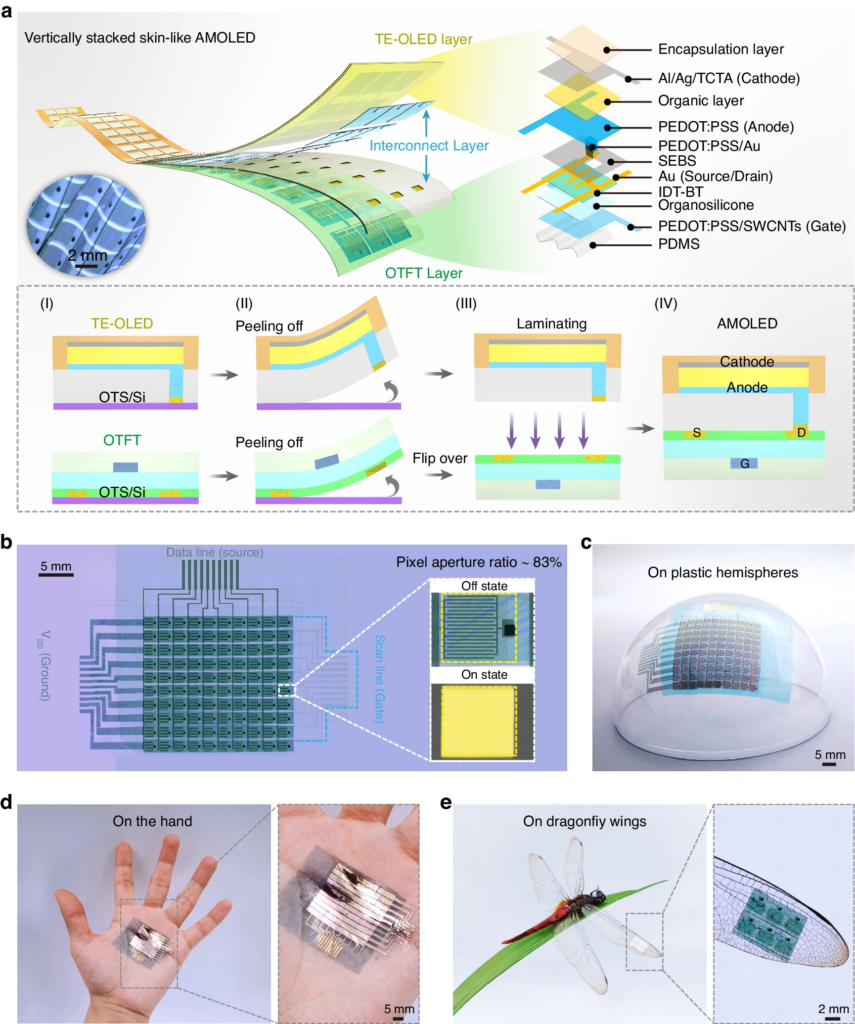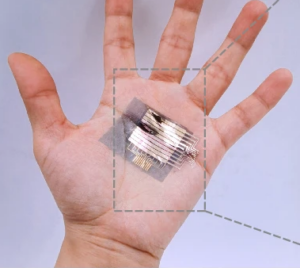Researchers have tackled a big challenge in creating skin-like displays that can be used in the next generation of wearable tech. These displays need to be super flexible to fit comfortably on the human body, but making them with a high aperture ratio—meaning the screen is mostly made of active pixels, not wasted space—is really tough. Traditional approaches have struggled with this, often resulting in displays with a lot of inactive areas and lower quality visuals. The researchers planned to overcome this by using a new strategy called discrete preparation-multilayer lamination. This involves preparing each layer of the display separately and then stacking them, which helps to avoid the chemical and physical damage that can occur when layers are built directly on top of each other.

To tackle the problem, the researchers developed a method where they separately prepared each layer of the display—like the top-emitting OLED (TE-OLED), interconnect layer, and the organic thin-film transistors (OTFTs)—on different substrates before laminating them together. This strategy avoids the common issues of mutual dissolution and mechanical incompatibility between layers that have plagued previous designs. They used photolithography and plasma etching techniques to create high-precision interconnect layers that ensure both electrical isolation and connection where needed. This setup allows for an impressive 83% aperture ratio, meaning most of the display area is used for actual display, not just wiring or support.
As for results, the researchers’ new vertically stacked display design proved to be a success. They demonstrated that their AMOLED display could maintain its performance even when bent or placed on a curved surface, like a silicone prosthetic hand, showing its potential for real-world applications in wearable tech. The display not only has a high aperture ratio, which results in brighter and clearer images, but also showed excellent mechanical flexibility, maintaining functionality even after numerous folding cycles. I love a happy ending.
Reference
Li, J., Ni, Y., Zhao, X. et al. Vertically stacked skin-like active-matrix display with ultrahigh aperture ratio. Light Sci Appl 13, 177 (2024). https://doi.org/10.1038/s41377-024-01524-z

